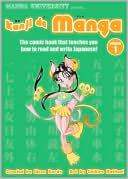List Books » Kanji De Manga, Volume 1: The Comic, Book That Teaches You How to Read and Write Japanese!
Category Books
- Fiction Books & Literature
- Graphic Novels
- Horror
- Mystery & Crime
- Poetry
- Romance Books
- Science Fiction & Fantasy
- Thrillers
- Westerns
- Ages 0-2
- Ages 3-5
- Ages 6-8
- Ages 9-12
- Teens
- Children's Books
- African Americans
- Antiques & Collectibles
- Art, Architecture & Photography
- Bibles & Bible Studies
- Biography
- Business Books
- Christianity
- Computer Books & Technology Books
- Cookbooks, Food & Wine
- Crafts & Hobbies Books
- Education & Teaching
- Engineering
- Entertainment
- Foreign Languages
- Game Books
- Gay & Lesbian
- Health Books, Diet & Fitness Books
- History
- Home & Garden
- Humor Books
- Judaism & Judaica
- Law
- Medical Books
- New Age & Spirituality
- Nonfiction
- Parenting & Family
- Pets
- Philosophy
- Political Books & Current Events Books
- Psychology & Psychotherapy
- Reference
- Religion Books
- Science & Nature
- Self Improvement
- Sex & Relationships
- Social Sciences
- Sports & Adventure
- Study Guides & Test Prep
- Travel
- True Crime
- Weddings
- Women's Studies
Kanji De Manga, Volume 1: The Comic, Book That Teaches You How to Read and Write Japanese! »

Authors: Chihiro Hattori (Artist), Glenn Kardy
ISBN-13: 9784921205027, ISBN-10: 4921205027
Format: Paperback
Publisher: Japanime Co. Ltd.
Date Published: January 2005
Edition: (Non-applicable)
Author Biography: Chihiro Hattori
Book Synopsis
The comic book that teaches you how to read and write Japanese!
This brand-new series from Manga University uses original comic artwork to teach readers how to identify and write the most common Japanese kanji ideographs. Volume 1 introduces 80 basic kanji that all Japanese schoolchildren are required to learn before entering the third grade. Subsequent volumes in the series will focus on more difficult kanji and kanji compounds. Each page features its own comic strip, kanji pronunciation guide, stroke order, and English explanations.
Martha Cornog - Library Journal
These cute, little books use manga-style graphics to help English speakers learn the Japanese writing systems. Kana de Manga: A Fun, Easy Way To Learn the ABCs of Japanese! teaches the hiragana and katakana syllabaries, the closest that Japanese has to an alphabet. For each kana are provided the sound, a word using the sound with accompanying illustration and cultural note, the stroke order for drawing the kana, and empty grids for practice. Front and back matter provide kana contractions plus more information about the kana systems. Almost 40 pages are devoted to practice grids, unnecessary for library readers. The volume is inexpensive, cute, and useful, although other kana tutorials that use mnemonics-that is, likening the kana to an image-can be effective, too.
The four Kanji de Manga volumes teach 320 of the more complex Chinese-based kanji characters, of which some 2100 are used in standard Japanese. These books teach kanji only through the kana. This may be a good discipline, but most English-speaking readers would have greatly appreciated Romanizations, too, even if relegated to a back section in place of practice pages. There's no Romanized index or glossary, either. Not a priority purchase.
Japanese Sound FX! is likely to be the most useful of these books, with Romanizations, cultural explanations, and illustrations for many of those untranslated sound effects sprinkled tantalizingly throughout manga. This last is recommended for libraries where manga is popular.
Table of Contents
Subjects
 Graphic Novels & Comic Books
Graphic Novels & Comic Books  Manga
MangaGraphic Novels
 Manga
Manga  Manga for All Ages
Manga for All AgesArt, Architecture & Photography
 Graphic Novels
Graphic Novels  Manga
MangaEntertainment
 Graphic Novels & Comics
Graphic Novels & Comics  Manga
Manga
